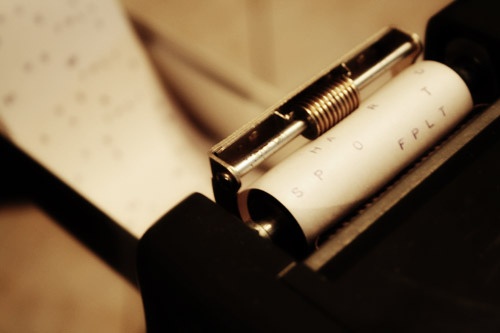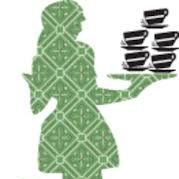
Rndballref
20 Years Experience
Chicago, IL
Male, 60
For twenty years I officiated high school, AAU and park district basketball games, retiring recently. For a few officiating is the focus of their occupation, while for most working as an umpire or basketball referee is an avocation. I started ref'ing to earn beer money during college, but it became a great way to stay connected to the best sports game in the universe. As a spinoff, I wrote a sports-thriller novel loosely based on my referee experiences titled, Advantage Disadvantage
The rulebook states that a dribble ends when the dribbler picks up the ball, the ball is touched by an opponent,or the ball becomes dead. It is a violation to dribble a second time unless it is after an attempt at try, a touch by an opponent, or a pass or fumble which touches another player.
So, if you dibble off a players foot and retrieve the ball and resume dribbling it is double dribble. If you would have passed the ball hitting a teammate and then retrieve it no violation.
Answer to your question is no.
Yes, the ball becomes live when it is at the disposal of the thrower on a throw in. It is illegal to have 6 players when the ball is live. Should be a technical.
BUT, it is also poor officiating by the referee crew, because one of the throw in officials' partners should be counting players (after time out for example) and preventing this situation from arising.
Doesn't sound like a correct call. The violation should have been ignored OR a pushing foul should have been called.
I was taught in this scenario to call a foul as soon as the post player starts a dribble or makes a move toward the basket (or shoots) . If the post player gives up the ball, pass on the foul call.
Veterinarian
 Do you think keeping monkeys as pets is a bad idea?
Do you think keeping monkeys as pets is a bad idea?
Court Reporter
 How do you transcribe when people in the courtroom are talking over and interrupting each other?
How do you transcribe when people in the courtroom are talking over and interrupting each other?
Waitress
 What types of customers are the worst tippers?
What types of customers are the worst tippers?
There is no provision in the NFHS rulebook which addresses any foul after the game. Each state has bylaws which might impose penalties for unsportsmanlike conduct outside the auspicies of the on-court officials. The referees' jurisdiction ends after they have validated the score and they leave the confines of the court. If something happened after the end of the game I was officiating I would write an incident report and send it to the state for action or disposal.
I certainly encourage you to report this. Most people officiate because they love the game, and if you love the game you have a duty to do anything in your power to advance the avocation of refereeing. I suggest you find out who ran the AAU tournament and voice your concerns. Because of your background, meaning you have training and experience and do not appear to be simply a biased, ticked off untrained parent, the AAU tournament director should be willing to tell you who the assigner of the officials was for the tournament and you should contact him/her directly.
I think most states would not allow an official complaint at the state licensing level because AAU tournaments are not normally state sanctioned contests even though they only hire "patched state officials".
The buzzer does not make the ball dead. Players should play on until they hear a whistle. Once possession has been established or the basket made the refs should blow the whistle, stop play and check with the timer to find out why the horn sounded.
-OR-
 Login with Facebook
Login with Facebook (max 20 characters - letters, numbers, and underscores only. Note that your username is private, and you have the option to choose an alias when asking questions or hosting a Q&A.)
(A valid e-mail address is required. Your e-mail will not be shared with anyone.)
(min 5 characters)
By checking this box, you acknowledge that you have read and agree to Jobstr.com’s Terms and Privacy Policy.
-OR-
 Register with Facebook
Register with Facebook(Don't worry: you'll be able to choose an alias when asking questions or hosting a Q&A.)